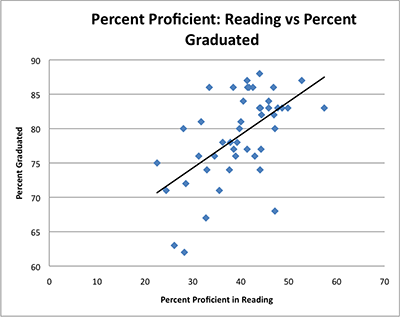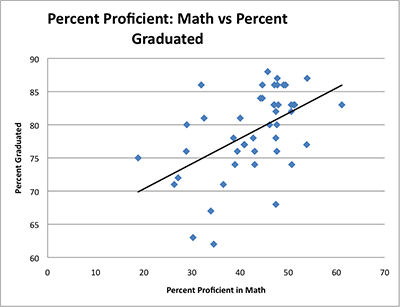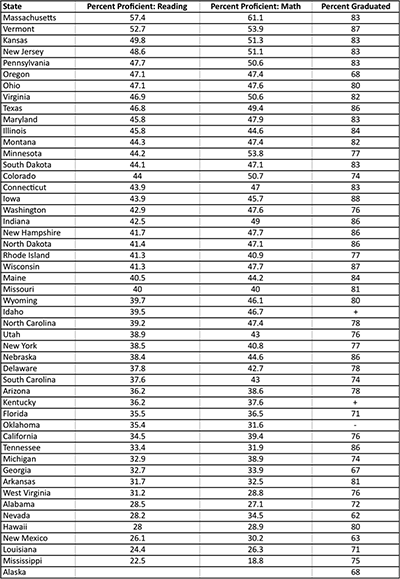Congratulations to the Obama Administration for releasing, for the first time, state-by-state information on high school graduation rates. We now know — from an authoritative source — how well each state does in getting 9th graders to graduation day within four years.

It was less than a decade ago that University of Arkansas scholar Jay P. Greene was excoriated for putting together his best estimate of the dismal graduation rates in states and school districts throughout the country. But what was then condemned as a flawed, right-wing undertaking has blossomed into a bipartisan movement that now has won the full support of the U. S. Department of Education. Congratulations, Jay Greene, on putting the topic on the policy agenda, and congratulations, Arne Duncan, on getting the national education data collection system to work the way it should!
So the question arises: Do graduation rates from high school have anything to do with student proficiency in reading and writing in 4th and 8th grade? Or are those pencil and paper tests meaningless piles of paper, as the accountability critics have been saying? Should we abandon standardized tests required under No Child Left Behind?

To find out if there is any connection between test performance and graduation rates, I have correlated state graduation rates just reported by the Department of Education with state proficiency reading and math rates on the National Assessment of Educational Progress, as presented in a report I wrote with Eric Hanushek and Ludger Woessmann (Globally Challenged, also available in article form as “Are U.S. Students Ready to Compete?“) in 2011.
Though the state-by-state correlation between reading and math proficiency and graduation rates is not perfect, it is a substantial, significant 0.58 in reading and 0.52 in math. As you can see in the graphs, in those states where a higher percentage of students are reading and math proficient in 4th and 8th grade, it’s likely that the graduation rates will be higher as well. A ranking of each state on its proficiency and graduation rates is also provided below.

If the results are not surprising, they underline the critical importance of continuing to track student test performance as the process of rewriting No Child Left Behind moves forward.
– Paul E. Peterson


